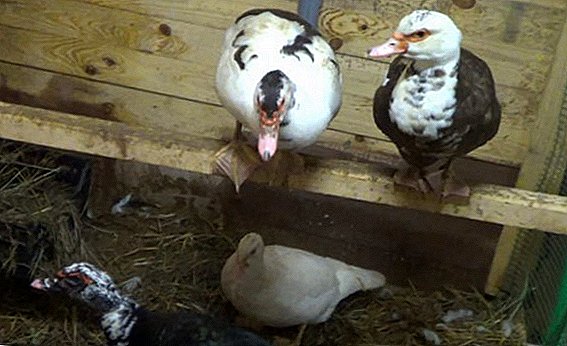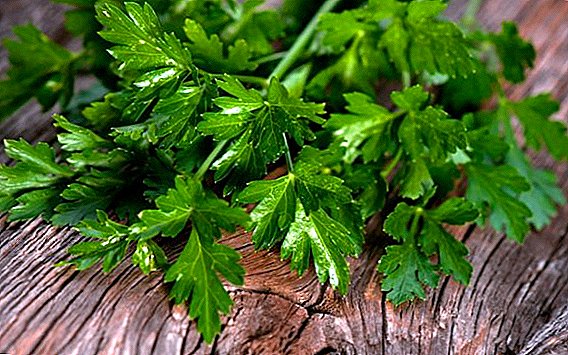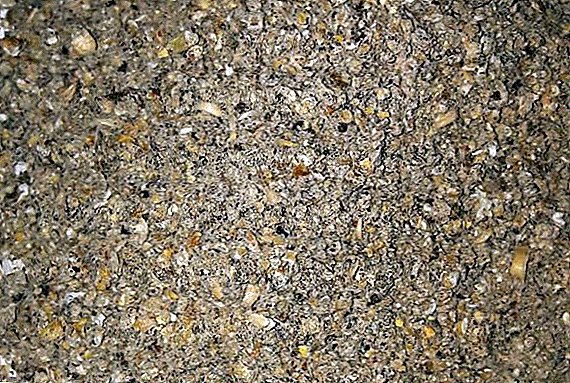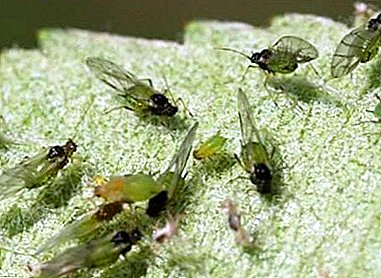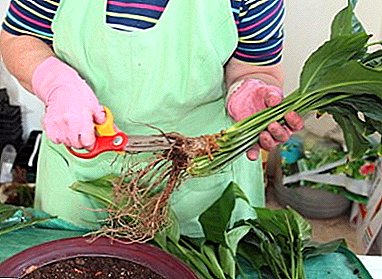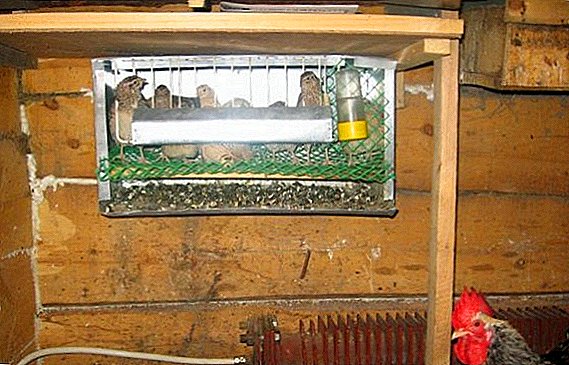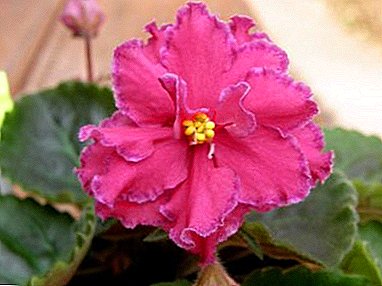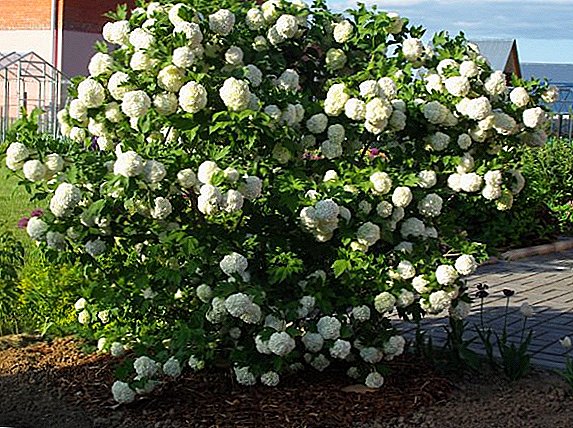 Kalina Buldenezh (from French "Boulede Neige" - snow globe) - ornamental shrub, a type of viburnum with large inflorescences similar to snowballs.
Kalina Buldenezh (from French "Boulede Neige" - snow globe) - ornamental shrub, a type of viburnum with large inflorescences similar to snowballs.
The plant is very popular with gardeners, despite the fact that it does not bear fruit.
Characteristics and features of viburnum Buldenezh
 This variety is called sterile viburnum, because her flowers are barren. When Viburnum Buldenezh blooms, its graceful, almost perfectly round shape, inflorescences make you forget about the absence of fruit.
This variety is called sterile viburnum, because her flowers are barren. When Viburnum Buldenezh blooms, its graceful, almost perfectly round shape, inflorescences make you forget about the absence of fruit.
This variety of viburnum, a representative of honeysuckle, grows to 3.5 m and, if not cut, to 1.5 m in diameter. Strong branches grow straight and then diverge in different directions, forming a wide crown. Gardeners, in order to give the shrub a more presentable look and beautifully beat flowering, give the crown of viburnum a hemispherical shape.
The main advantage of the bush Buldenezh - its inflorescences. Balls hanging from branches are up to 15 cm in diameter. Each flower in an inflorescence is dismissed by several semicircular petals without stamens.
Viburnum blooms in May, first the flowers have a pale green tone, then change to pale pink or cream, and only when they are fully blossomed they take on a snow-white color.
Large inflorescences are quite heavy, and the thin branches of the bush bend to the ground under their weight. Inflorescences last about a month, then dry out.
It is noteworthy that the life span of Viburnum Buldenezh is quite high, up to 60 years the plant is still blooming. In the autumn, the leaves are poured with a purple tinge, which distinguishes them from the yellowing foliage of other bushes or trees.
Is there some more terry grade viburnum Buldenezh. This shrub has a delicate pink color of inflorescences, otherwise (planting and care) is similar to a "snow globe."
How to plant seedlings viburnum Buldenezh
 Shrub Buldenezh is a long-lived, so choose a place for him competently, he will spend more than a dozen years there.
Shrub Buldenezh is a long-lived, so choose a place for him competently, he will spend more than a dozen years there.
The bush has a spreading crown, you can use it by planting it near a bench or a gazebo to create a shadow.
Optimum terms for landing
Planting dates depend on the choice of breeding method. Planting viburnum layering is carried out in the spring, dividing the bush - in the fall, for grafting it is better to choose summer time. It is not recommended to land in cold and rainy weather.
Soil selection and preparation
A good place to plant will be a plot in a lowland or near a reservoir. If you do not have such a place, plant viburnum in partial shade. In full shade, the shrub will grow, but to the detriment of flowering: the inflorescences will be small and inexpressive. In the open area of the sun flowering will be short and there is a risk of getting burned.
The soil for viburnum is suitable wet, loose, with an acidity of 5.5-6.5. Too dense soil can be "diluted" with sand, sour - lime. In any case, the soil should be nutritious, fertilize it with humus before planting.
Proper landing technology
 At viburnum root system is highly developed, therefore a deep pit is being prepared. One of the options for planting shrubs will be the preparation of holes 80 cm deep and 60 cm wide. The bottom of the pit is drained with crushed stone or pebbles. Drainage covered with sand 15 cm.
At viburnum root system is highly developed, therefore a deep pit is being prepared. One of the options for planting shrubs will be the preparation of holes 80 cm deep and 60 cm wide. The bottom of the pit is drained with crushed stone or pebbles. Drainage covered with sand 15 cm.
Next, make a pre-prepared soil: compost (4 buckets), wood ash (600 g), nitrophoska (200 g). The seedling is deepened into the soil 3 cm below the root collar, plentifully watered and covered with mulch (humus or sawdust).
The method of group planting viburnum will be 2 square by 2 meters. You will be surprised how quickly viburnum Buldenezh grows. In the first year, all the forces go to the development and strengthening of the roots, but by the 3rd year of life the plant reaches 1.5 m.
Proper care of viburnum Buldenezh
In addition to watering and feeding, viburnum (adult plant) needs a formative or auxiliary pruning.
Did you know? The snow globe got into Russian gardens thanks to Catherine II. Kalina Buldenezh was considered a plant of aristocrats and was grown only in royal parks, greenhouses and gardens.
Regular watering
 Kalina loves moisture. Young plants consume large amounts of water, they need to be watered more often. Both young and adult bushes require special attention during dry periods.
Kalina loves moisture. Young plants consume large amounts of water, they need to be watered more often. Both young and adult bushes require special attention during dry periods.
The soil around the trunk should not dry out, so in the absence of precipitation water more often. In rainy weather the plant has enough natural precipitation. In summer, in hot weather, water several times a month so that the flowering period in spring does not decrease.
Important! In late autumn, Kalina is watered abundantly before frost to avoid dehydration in winter.
Top dressing and bush fertilizer
As the plant is planted in well-fertilized soil, the first feeding is carried out the following year. In the spring when the first leaves appear for good development, fertilizing is carried out with nitrogenous compounds. You can make organic - 2 buckets of humus under the bush.
The second time they feed with potash-phosphate fertilizers in autumn. You can use both liquid and dry dressings. Granular fertilizers are spread on loosened soil under a bush. After making dressings in the spring need abundant watering.
Anti-aging and shaping pruning
Consider how to trim Kalina Buldenezh. After the bush blooms, the side branches are shortened, dry and growing inside the bush. The choice of the form of a shrub is your fantasy: a semicircle, a standard tree. 
Attention! It is not recommended to do pruning at the end of summer - viburnum at this time is preparing for the winter period, accumulating nutrients.
Every year, the plant is freed from damaged or frozen shoots in winter. Crown plant begin to form when the bush reaches 1.5 m in height. Krona thinned inside the bush and pruned external shoots.
If you want to form a tree with several trunks, the young bush should be cut to the level of the stump, leaving about 20 cm. In this case, the growth of the side branches is stimulated.
At the end of July, the young branches pinch in order to achieve a more lush flowering; last year's shoots are not touched, since it is on them that the buds are laid. Sometimes the biggest branches need support, they should be tied up so as not to break under their own weight.
Methods of breeding viburnum Buldenezh
Kalina Buldenezh is propagated in a vegetative way, because the inflorescences of the plant are deprived of pistils and stamens and do not produce fruits and seeds.
Layering
 For spring propagation by layering, make long furrows up to 10 cm deep near the trunk of a bush. Tilt annual stalks and fasten with straps in the furrows. Shoots cover with soil with humus, compact and water well. It is desirable to defend water or to prepare rainwater in advance.
For spring propagation by layering, make long furrows up to 10 cm deep near the trunk of a bush. Tilt annual stalks and fasten with straps in the furrows. Shoots cover with soil with humus, compact and water well. It is desirable to defend water or to prepare rainwater in advance.
When shoots appear, perform an earthing up. Constantly maintain soil moisture. Separate the rooted cuttings from the donor bush, divide into seedlings and plant in pots or other containers. The seedlings are transferred to a permanent place at the age of two, when the root system is fully formed and strengthened.
Dividing bush
Reproduction by dividing a bush is similar to the method of reproduction by layering. The difference is that the branch in the furrow is not completely covered with soil, the tip above the surface remains. So that the roots are formed faster in the delenka, the bark on the part recessed into the ground is pruned. In the fall, the sapling is separated from the mother bush and transplanted.
Interesting! The name "viburnum" comes from the ancient "Kolo", which meant the sun. Kalina was the embodiment of the Slavic goddess Lada. Baby girls bathed in water with viburnum berries, believing that such a rite would give them happiness and beauty.
Cuttings
 Viburnum cuttings are carried out in the summer, and the branches remaining after pruning are taken under the cuttings. It should be green shoots with several pairs of buds and internode. The leaves closer to the cut removed, the stalk is placed for 10 hours in the "Kornevin" to stimulate the growth of roots.
Viburnum cuttings are carried out in the summer, and the branches remaining after pruning are taken under the cuttings. It should be green shoots with several pairs of buds and internode. The leaves closer to the cut removed, the stalk is placed for 10 hours in the "Kornevin" to stimulate the growth of roots.
During this time, preparing the garden and soil. For soil, they take in equal parts turf soil, sand and humus, and moisten the soil. Treated cuttings are planted in the soil, deepening by 2 cm. It is desirable for the plant to create greenhouse conditions by pulling the film over it. The soil must be moistened, cuttings can be sprayed. By the end of the summer there will be young shoots.
How to deal with possible pests of Viburnum Buldenezh
The most common pests of viburnum are the viburnum leaf beetle, scale insect and aphid.
Viburnum leaf beetle - It is a beetle that nibbles the leaves of a plant and is able to bring it to death. To combat the parasite, use karbofos or phosbecid. The first time to process the bush in May, to get rid of the larvae, the second time in August to get rid of adult individuals.
Shchitovka - This is a small parasite, sucking the juice from the leaves of the plant. To get rid of the insect will help treatment "Aktara" or "Ascoris."
 Aphid sucks the juice from the leaves. Against these parasites are sprayed with soapy water or "Agravertin". It is necessary to spray in the evening in calm weather. Scare away the parasite can a layer of ash on the ground around the shrub.
Aphid sucks the juice from the leaves. Against these parasites are sprayed with soapy water or "Agravertin". It is necessary to spray in the evening in calm weather. Scare away the parasite can a layer of ash on the ground around the shrub.
The most painful for viburnum disease - powdery mildew. When infected, the plant is covered with white bloom, for two weeks the whole bush can be affected.
Fight with the fungus will help ash infusion (3 kg per 10 liters of water), a solution of soda ash and soap (10 liters of soapy water 50 g of soda). Spray can be after a flowering period of 3 weeks, once a week. For the prevention of the disease in the spring sprayed with infusion of garlic, onions or tobacco.
In order not to be tormented by the question: why does not the viburnum Buldenezh bloom in your area, follow all the rules of planting, care and especially trimming. The procedure of cutting or pinching done at the wrong time comes around on a flowering stage. The plant, planted in a deaf shadow, also will not please you with color.
 Under all conditions, your garden will be replenished with another beautiful ornamental plant. Kalina Buldenezh in landscape design can occupy any niche. This is a beautiful single landing, group with hvoynikami or lilac, the center of the composition, the living fence and much more that tells you the imagination.
Under all conditions, your garden will be replenished with another beautiful ornamental plant. Kalina Buldenezh in landscape design can occupy any niche. This is a beautiful single landing, group with hvoynikami or lilac, the center of the composition, the living fence and much more that tells you the imagination.


